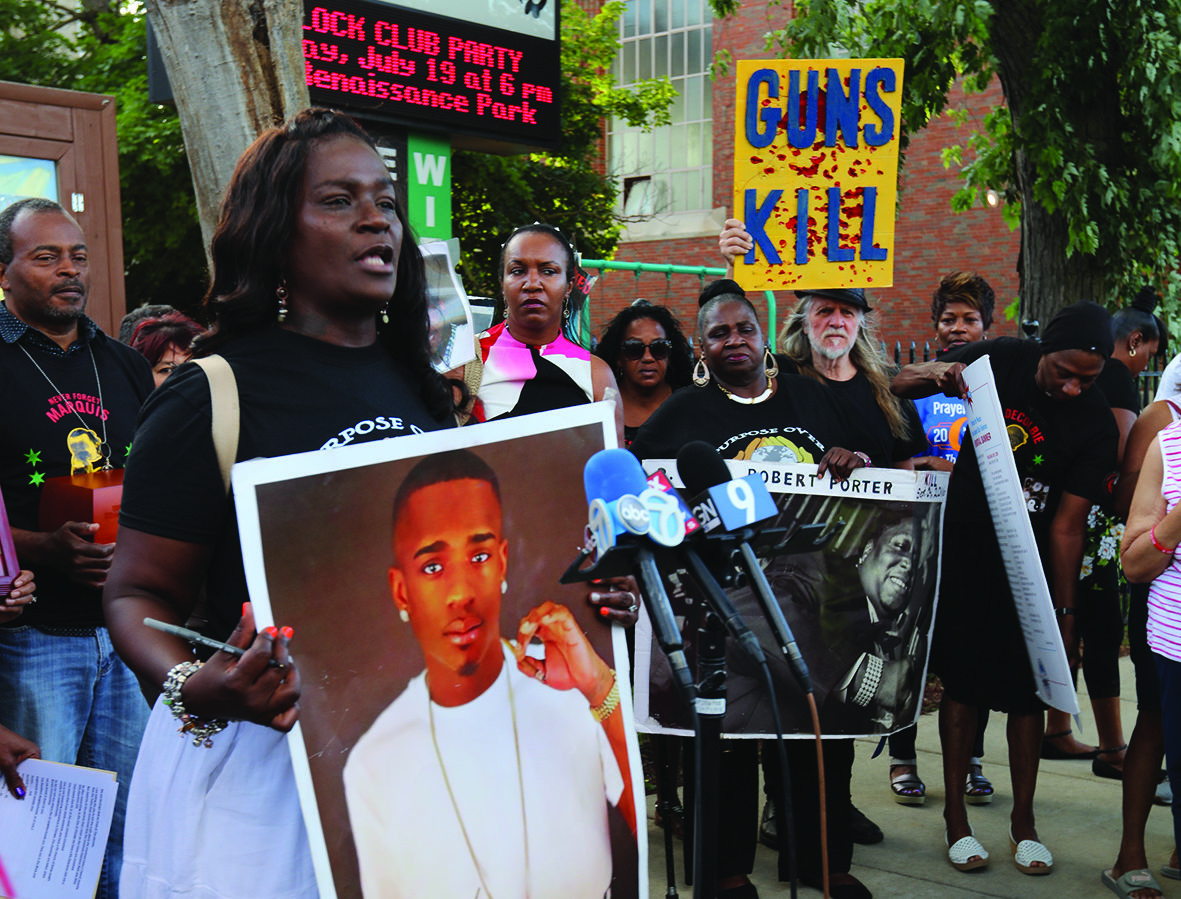Three gunshots ring out and a woman repeatedly wails, ‘Oh my God,’ piercing a heartbeat-like drum loop. From the outset, filmmaker, photojournalist and artist George Gittoes’ gripping documentary White Light (2019) unsettles. Sixteen-year-old Englewood resident Li’l Dave raps this opening track, produced by Gittoes’ partner and music director Hellen Rose. It follows grainy mobile phone–shot images depicting a terrible procession of bodies bleeding in the street, cartoon hearts obscuring their faces. The song is a siren call expressing raw pain at the staggering cost of gang warfare and police brutality in Chicago’s South Side.
Gittoes spent a year at the epicentre of this swirling violence shooting White Light, which bowed at last year’s Sydney Film Festival. His subjects had the last word on what ended up in the final cut, he says:
I always believe that when you make a film like this, whether it’s in Afghanistan or Pakistan, Iraq or anywhere, you need to show the community the cut. And then if they object to something, you try to persuade them to keep it, and then you’ve got an obligation to get their permission.
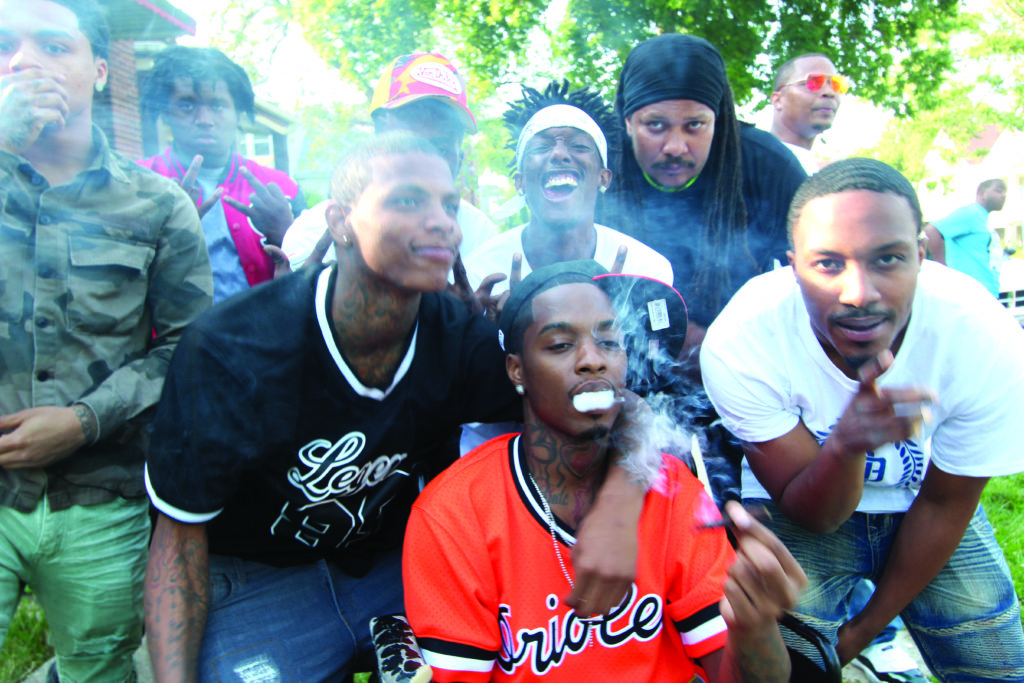
The only problem raised was the visibility of the victims’ faces. While the community deemed it important to retain the brutal truth of that footage, they wanted identities obscured to protect grieving families, Gittoes says.
So I went for a walk and I noticed that, wherever there’s a shooting, they’d carve out a wooden heart and nail it to the spot in the street where their son or brother or sister was killed. Like in Australia when there’s a road accident, and someone puts up flowers on the tree [that] the car wrapped itself around […] So I decided to put little hearts over their faces, and they were terribly happy with that.
White Light’s startling opening credits announce a grim statistic. From 2003 to 2018, some 4541 American soldiers were killed while on active duty in Iraq, a tragic toll that was, disturbingly, dwarfed by civilian gun deaths in Chicago during the same period: 8172. A disproportionate number of those fatalities occurred in the Englewood neighbourhood (‘A small community as big as Wollongong or Newcastle’, Gittoes points out), which has been dubbed ‘Chi-raq’ with gallows humour by the predominantly African-American locals – a title borrowed by the eponymous 2015 Spike Lee joint. Lee’s movie ruffled a few feathers in Englewood, Gittoes notes, a fate he was determined to avoid: ‘I said, “Let’s make this the film that you feel tells the truth.” […] We took everyone’s direction, so they [would] feel a sense of ownership of the film.’
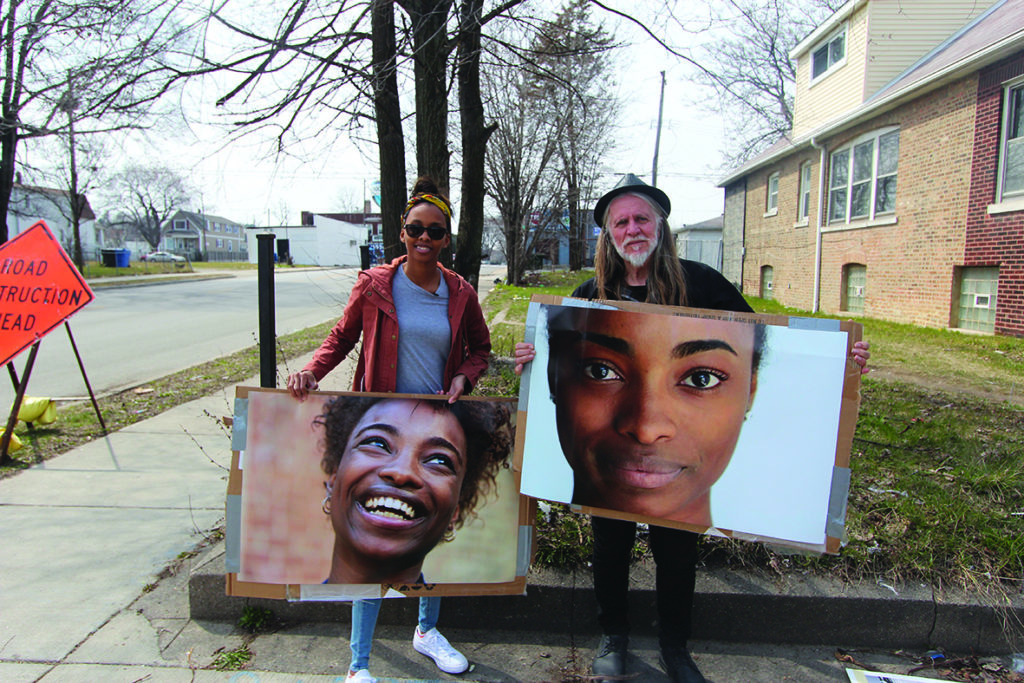
First-person perspective
In White Light, ownership of territorial corners is shown to be a fraught topic. Young men insist that they do not hate their rivals. But they feel compelled to retaliate when struck, perpetuating the cycle of violence. A mother barely allows her young daughter to leave the house, afraid she’ll be caught in the crossfire – as happened to promising young beauty-contest winner Kaylyn Pryor, gunned down at a bus stop on the day she was due to sign a modelling contract.[1]Kelly Kane, Michelle Relerford & Dick Johnson, ‘Winner of Mario Tricoci’s “Mario, Make Me a Model” Contest Shot to Death in Chicago’, NBC Chicago,5 November 2015, <https://www.nbcchicago.com/news/national-international/mario-tricocis-model-shot-to-death-in-chicago/1988616/>, accessed 27 October 2020.
And then there’s the police to contend with. Smartphone-snapped footage shown here echoes many of the distressing images that have galvanised and been disseminated by the Black Lives Matter movement.[2]See Audra DS Burch et al., ‘How Black Lives Matter Reached Every Corner of America’, The New York Times, 13 June 2020, <https://www.nytimes.com/interactive/2020/06/13/us/george-floyd-protests-cities-photos.html>, accessed 27 October 2020; see also Steven Aoun, ‘Bearing Witness: Black Lives Matter Protests as Media, and Mediated, Event’, in this issue of Metro, pp. 102–6. As one impassioned subject puts it during a confrontation with white police officers:
How many white communities have got mostly black cops? […] You enslaved my ancestors – we never forgave you. We ain’t trying to do shit but live with your dumb ass. You think I’m apologising to you when I’m dying every day?
In a terrifying moment, a police car skids to a halt while Gittoes is filming ‘prince of the streets’ Solja – a charismatic, youthful leader of the Black Stones Brothers gang, who lost his leg after a shooting – in public. ‘I’m not afraid of any black person in South Side, including the people who shot Solja, but I would be very, very worried if a cop car pulled us over,’ Gittoes says. He had hoped to speak to police officers, too, but was met with resistance from the commissioner, even with the Australian consulate-general negotiating on his behalf. ‘[The police department] tried to prevent the film from being made,’ he imparts.
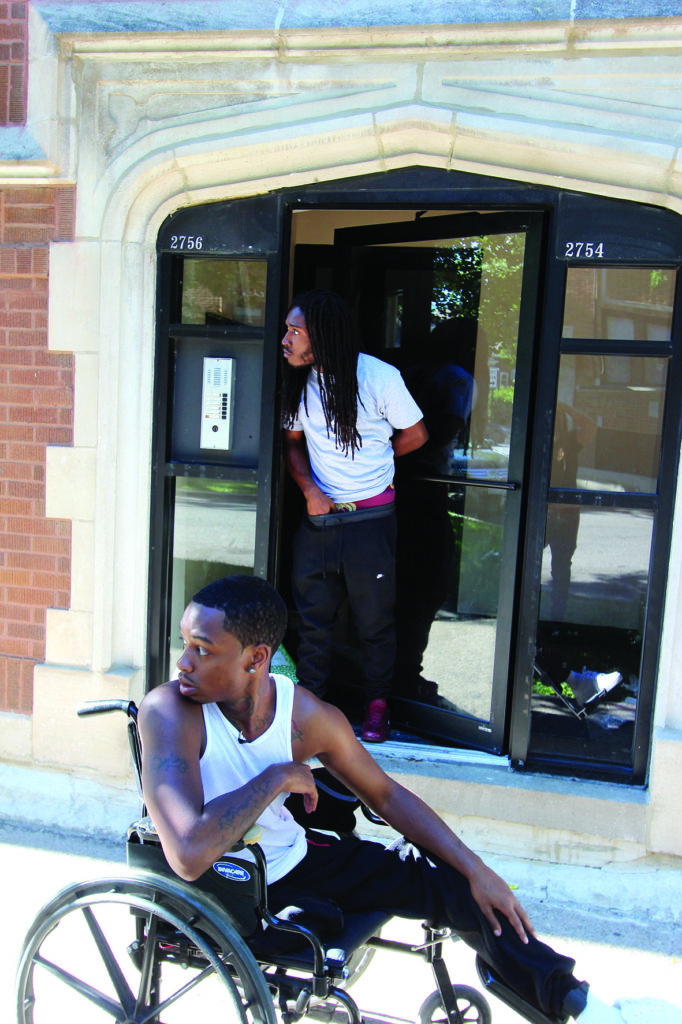
Gittoes takes a cinema-vérité approach. Travelling light, he shared camera duties with regular cinematographer Waqar Alam; Rose, meanwhile, worked on the soundtrack with locals. While the documentary required a lot of handheld camerawork on the go, he and Alam also embraced drones, which they had previously used in Afghanistan. ‘They’re the biggest change, in terms of documentary making, and I love monitoring changes in the medium,’ Gittoes says. Today’s near-ubiquitous phone and security-camera footage is just as important, he adds.
That’s the new obligation I think filmmakers have, to seek out what exists […] Anything like a shooting will have been covered, and you won’t just have the person talking about it. You can find it. [The image quality] might be crappy, but it’s better than imagining it.
Again, he says, the process is about listening and learning before the story takes shape. ‘If you were doing an ABC-commissioned [production], you’d have a script before you went. But I go first; then it becomes like a formal documentary once I’ve found the right people.’
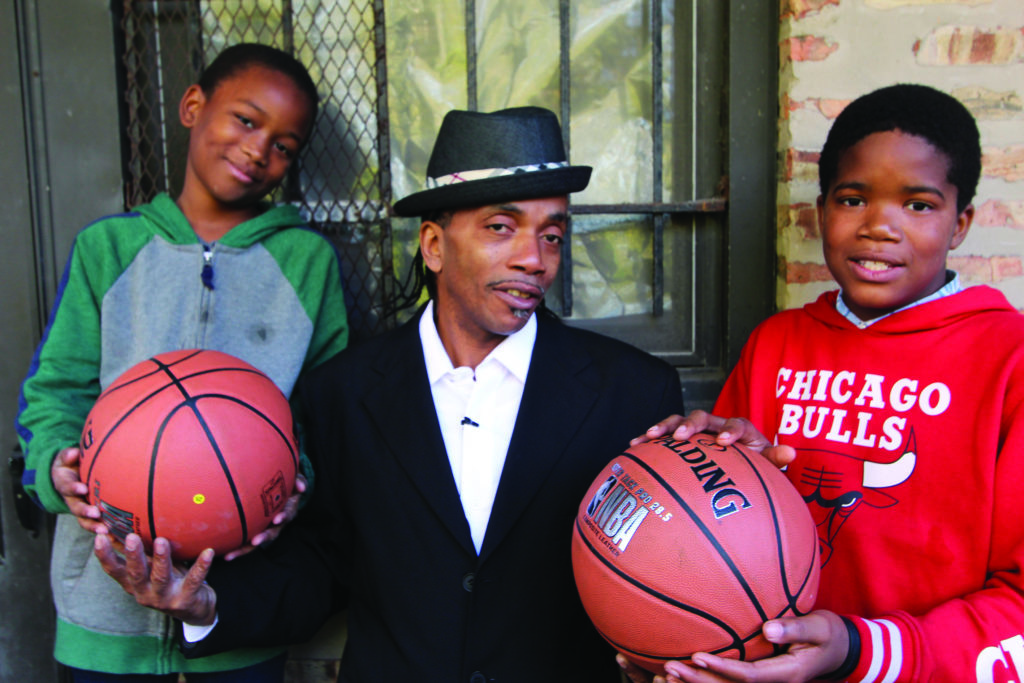
The road to Englewood began in the ostentatious surrounds of Uday Hussein’s palace, shortly after the fall of Baghdad in 2003. There, Gittoes documented the rap battles of marines temporarily stationed in these luxurious surrounds for his 2005 doco Soundtrack to War. Gittoes recalls one soldier, Elliot Lovett, laughing, ‘George, it’s much safer for me here in Baghdad than in Miami.’ That suggested the premise of Rampage (2006), a sequel of sorts that traces the aspiring rap careers of Lovett’s brothers, and the frequent gun battles that dramatically put their dreams at risk.
‘If you were doing an ABC-commissioned production, you’d have a script before you went. But I go first; then it becomes like a formal documentary once I’ve found the right people.’
— George Gittoes
Gittoes also met Ethiopian-born Yonas Hagos in Baghdad. The former refugee–turned–entrepreneurial millionaire was sore the filmmaker chose Miami, insisting that the situation was much worse in Chicago. So after following the Taliban in The Miscreants of Taliwood (2009) and young Afghan kids in both Love City, Jalalabad (2013) and Snow Monkey (2015), Gittoes decided to enlist Hagos’ help in telling the story of Englewood. But that offer stalled.
He hadn’t told his wife. So Waqar and I […] went to his very expensive house – in a rural part of Chicago, with a garage full of cars and a gun collection to rival Clint Eastwood or Charlton Heston – and we chatted all night. But his wife said, ‘It was too hard to get out of the ghetto. Please don’t take him back with you.’
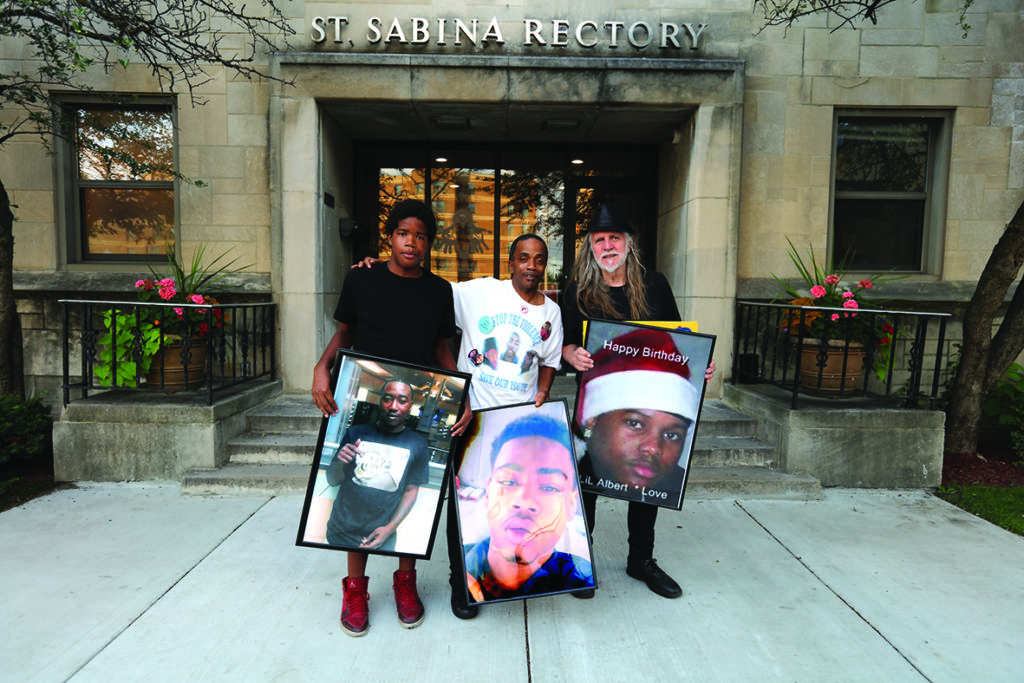
Fate has a funny way of fixing things for roll-with-the-punches Gittoes. He bumped into another old contact who set them up in an apartment in a building orphaned by demolition, on a corner rife with shootings:
I’d go down each morning and have my morning cup of tea sitting on a log on the corner. And so, naturally, people came over, you know. They hadn’t seen this white guy before. And I’d say, ‘Well, this is my idea. I want to find someone who’s been shot.’
This approach led him to gang leader Solja. As the son of the Yemeni immigrant owners of the corner store where he was shot – a hotspot for retaliatory strikes – drolly notes, the only difference between the war zone his family fled and the one raging in Chicago is that ‘over here, if you get shot, you get rushed to a hospital’.
Solja and his men speak freely. ‘The thing that puzzles people is the level of trust,’ Gittoes says of audiences’ reactions to their candid revelations. ‘That’s the kind of question which people who have a safe life ask.’ He expands:
What I’ve discovered in all the war zones that I’ve worked is that, whether it’s Yemen, Baghdad, Chicago or wherever, [the people there] learn a survival skill of assessing people not in minutes, but seconds.
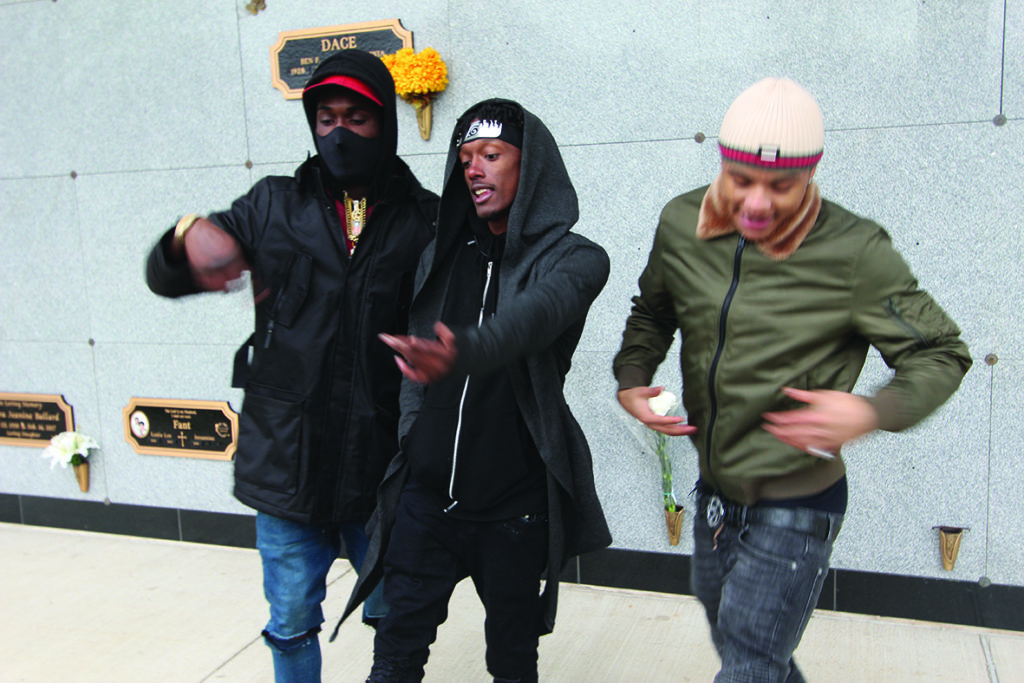
War child
Something of a nomad, Gittoes has long been called by war. After early experimental films and an ABC TV documentary exploring the cultural lives of young First Nations kids, Tracks of the Rainbow (1982), he headed to Nicaragua. There, he traced the brutality of the Ronald Reagan administration–sponsored Contra War in 1987’s The Bullets of the Poets. He’s been thrusting himself into fractured lands ever since. As Gittoes writes for the Encyclopædia Britannica, ‘I have spent much of my life creating art for peace in the face of war.’[3]George Gittoes, ‘Drones, War, and Peace’, Encyclopædia Britannica, 25 May 2018, <https://www.britannica.com/topic/Drones-War-and-Peace-2119125>, accessed 27 October 2020. It’s a calling that has spirited him to the killing fields of Cambodia, the IRA campaign in Northern Ireland and American imperial forays into the oil-rich Middle East. ‘I have also witnessed triumphs of the human spirit,’ he continues in that essay, recalling Nelson Mandela’s ‘Rainbow Nation’ speech in Pretoria and inauguration as the first black president of South Africa.[4]ibid.
Perhaps there’s shrapnel buried in his DNA. Gittoes was born in southern suburban Sydney in 1949, in a post–World War II Australia that was booming largely thanks to the thrum of immigration. He headed to the US in his late teens, at the tail end of the 1960s. ‘There’s always been a strong political/social side to my work from a very early age,’ he says. ‘So when I heard about Martin Luther King [Jr], I wanted to go to America.’
‘What I’ve discovered in all the war zones that I’ve worked is that, whether it’s Yemen, Baghdad, Chicago or wherever, the people there learn a survival skill of assessing people not in minutes, but seconds.’
— George Gittoes
Winding up in New York City, he crossed paths with Andy Warhol,[5]As the story goes – and Gittoes is fond of rambunctiously rambling recollections – he and Warhol bonded over a shared fascination with the arcane, having met in a subterranean New York bookshop dealing in mystical tomes. ‘And so here’s this beautiful-looking nineteen-year-old blonde-haired boy like [Joe] Dallesandro out of Flesh [Paul Morrissey, 1968],’ Gittoes says, of his resemblance at the time to the star of the Warhol-produced film about a male sex worker. who lent Gittoes his Mickey Mouse–eared 16mm camera and introduced him to Joseph Delaney, the late African-American artist and civil-rights-movement leader. Delaney left an indelible mark on Gittoes: ‘He was the emcee at a lot of Black Panther meetings, and here I [was], the only white boy.’ His experience of being mentored by Delaney and mingling among the Harlem Renaissance scene ignited his already smouldering passion for social justice, a passion that shines through in White Light, half-a-century on.
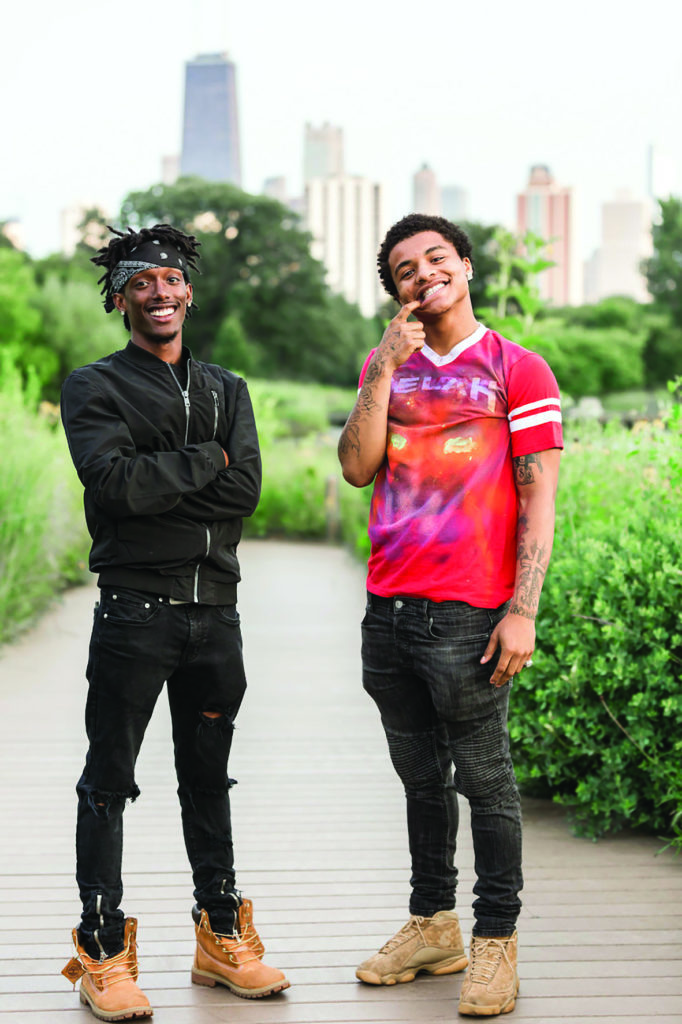
Fighting fire with fire
If there’s a burning injustice raging beneath White Light, it’s the killing of Pryor, who is repeatedly depicted in the film as an angel looking over Englewood. She had big prospects after winning Mario, Make Me a Model, a renowned competition run by local hair-salon owner Mario Tricoci, when she was shot alongside a young man, Jon Jon, who survived. Gittoes knew he had to find him. ‘And then it becomes a little bit scary, because you’ve invested in doing that story,’ he confides. ‘Suddenly it’s clear, and you have to hope they will agree.’
It’s the unguarded voices of Englewood residents that make White Light truly sing, like the operatic soar of an incredible young man whom Gittoes captured performing at a street sermon marking the fiftieth anniversary of King’s assassination. ‘He’s amazing,’ Gittoes agrees. ‘He’s the cleaner at the [National] Civil Rights Museum in Memphis. He’s so modest; he’s got no self-awareness of [his talent] at all.’ At the time of writing, Gittoes and Rose are trying to help that young man pursue a singing career in Nashville. They always try to open doors for the people who lend them their voices; for Gittoes, it all comes back to artistic responsibility. This is why he was also determined to ask community elder Steven ‘Smiley’ Armour to narrate the film:
His voice is not as perfect as if I [had gotten] Russell Crowe to do it, but that was the nature of the project. I wanted the film to be the voice of the South Side of Chicago.
Endnotes
| 1 | Kelly Kane, Michelle Relerford & Dick Johnson, ‘Winner of Mario Tricoci’s “Mario, Make Me a Model” Contest Shot to Death in Chicago’, NBC Chicago,5 November 2015, <https://www.nbcchicago.com/news/national-international/mario-tricocis-model-shot-to-death-in-chicago/1988616/>, accessed 27 October 2020. |
|---|---|
| 2 | See Audra DS Burch et al., ‘How Black Lives Matter Reached Every Corner of America’, The New York Times, 13 June 2020, <https://www.nytimes.com/interactive/2020/06/13/us/george-floyd-protests-cities-photos.html>, accessed 27 October 2020; see also Steven Aoun, ‘Bearing Witness: Black Lives Matter Protests as Media, and Mediated, Event’, in this issue of Metro, pp. 102–6. |
| 3 | George Gittoes, ‘Drones, War, and Peace’, Encyclopædia Britannica, 25 May 2018, <https://www.britannica.com/topic/Drones-War-and-Peace-2119125>, accessed 27 October 2020. |
| 4 | ibid. |
| 5 | As the story goes – and Gittoes is fond of rambunctiously rambling recollections – he and Warhol bonded over a shared fascination with the arcane, having met in a subterranean New York bookshop dealing in mystical tomes. ‘And so here’s this beautiful-looking nineteen-year-old blonde-haired boy like [Joe] Dallesandro out of Flesh [Paul Morrissey, 1968],’ Gittoes says, of his resemblance at the time to the star of the Warhol-produced film about a male sex worker. |
